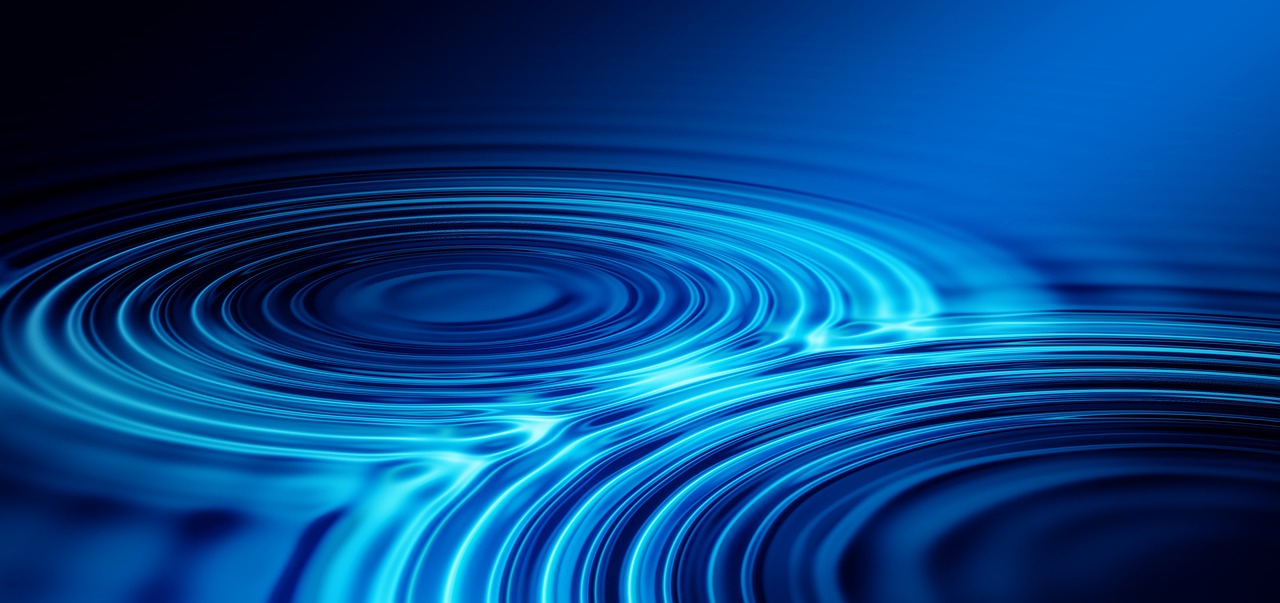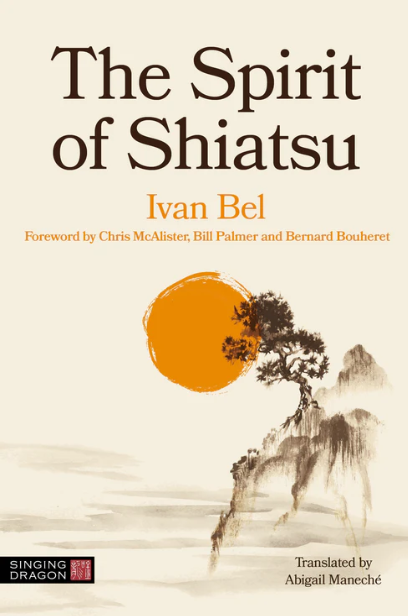It’s not uncommon for Shiatsu receivers to experience post-treatment effects. When this happens, there’s no need to worry, as it’s a sign of a highly effective treatment, and the body/mind goes through more or less intense regulating effects. The Japanese call this the Meiken effect. In this in-depth, fascinating article, the result of the 1st Summer University workshop, we explore the centuries and history in search of this natural regulating effect.
By Bernard Bouheret
“Every living thing in the cosmos is animated by the uninterrupted flow of Ki or life force. As a result, even a small stagnation can cause illness or, in the case of a blockage, death.”
Anpuku Zukai – Shinsai Ota
To begin with, let’s do a brief character study. Meiken (pronounced Meigen) in Japanese, or Míng xuàn in Chinese, is written 瞑 眩. The 1st character is associated with meditation, having one’s eyes closed, while the second can be translated as dazed, dazzled, fainting. Note that both have on their left the key of the eye, which in Chinese medicine indicates both the state of Shen and therefore the health of the individual.
Let’s be clear from the beginning: Míng xuàn/Meiken is seen as a positive step in the healing process. It is this “life force” in action that the anpuku zukai speaks of. Meiken is seen as a detoxifying, regulating effect, drawing on the body’s self-regulating and self-repairing function. It’s a rebound effect. The treatment generates an action that triggers a reaction. Japanese masters say that without a reaction, there can be no healing. Healing means returning to the center, and this can only be achieved by going back and forth around the center. We can’t rebalance ourselves without going through a phase of readjustment, then everything returns to the center over time, and the greater the imbalance, the longer the time. Let’s never forget that the basis of balance is movement. Consequently, healing is movement, and healing is change, even if it causes a few after-effects along the way.
Medicatrix naturae
All symptoms are possible, and may last a few hours, a few days, a few weeks or even longer. This is to be distinguished from drug side-effects, which are not related to the Meiken effect. To better illustrate our point, we need to go back to the history of our own medicine, when we believed in the healing power of the body, what the ancients called “medicatrix naturae”.
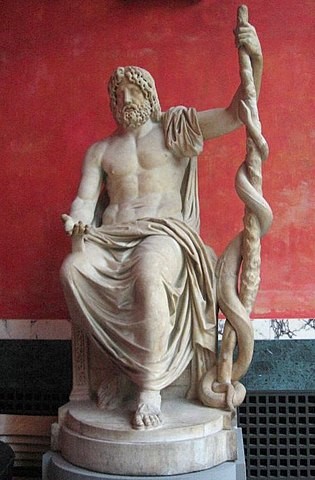
Hippocrates of Kos (460-377 BC), whose famous oath doctors take, believed that an organism is not passive in the face of injury or disease, but rebalances itself to fight against it. Illness, therefore, is not a disease, but an effort by the organism to overcome a disturbed equilibrium. It is this ability of organisms to correct imbalances that distinguish them from non-living matter.
Illness is therefore a “natural Meiken effect” for regaining health. We know, for example, that childhood illnesses are necessary and welcomed so that the child can develop a good immune system for the rest of his or her life. From this stems the medical approach that “nature is the best doctor” or “nature is the healer of disease”. To this end, Hippocrates considered that a physician’s main objective was to assist this natural tendency of the body by observing its action, removing obstacles to its action, and thus enabling an organism to regain its own health through its own efforts.
This was also the thinking of the ancient Chinese physicians, and is indeed what is dealt with in the first 11 chapters of the Su Wen. It’s also found in Ayurvedic medicine and in all traditional ancestral medicines. The main idea behind this vision is that Man is a Small universe subject to the same laws as the Greater Universe.
“Man’s body is a Small Universe and the Universe is a Big Body” says the Su Wen (500-200 BC).
“Nothing is separate from nothing, and what you don’t understand in your body, you won’t understand anywhere else” says the Upanishads (800-500 BC) of ancient India.
After Hippocrates, the idea of “vis medicatrix naturae” continued to play a key role in medicine.
Following Hippocrates, Galen (131-201) is the greatest figure of ancient medicine. He was the personal physician to Emperor Marcus Aurelius in Rome. His anatomical studies on animals and his observations on the functions of the human body dominated medical theory and practice for fourteen centuries. In contrast to Hippocrates, his therapeutics were based on the use of opposites: “contraria contrariis curantur” (opposites are cured by opposites); as medicinal plants held a special place in the therapeutic arsenal, this part of the pharmacopoeia is still known as “galenic pharmacy”, and herbalists studied “galenic forms”.
Hildegarde von Bingen (1098-1179) made this the central focus of her visions and intuitions. She is considered Germany’s first naturalist. She was also a physician, and her dual gifts as herbalist and healer made her one of the most renowned of her time. Her medicine combined scholarly elements from great authors with local traditional medicine.
“The body is the home of the soul, with a door, windows and a chimney. The soul brings thoughts in and out as through the door (the heart), the brain is the soul’s chimney that discerns and evacuates bad thoughts. Windows bring light… eyes are the windows of the soul. You can see a man’s soul in his eyes”.
A striking resemblance to the Chinese description of Shen, isn’t it? The Nei Jing Su Wen tells us: “Shen can be read in the glow of the eyes”, hence the choice of characters we saw at the very beginning.
Some elderly people manage to keep this radiance intact, but they still have to maintain a sustainable balance in which the body-mind link is intimately interwoven.
And what of this vision of Man in the world?
In her “Book of Divine Works”, she sets out her ideas in cosmic visions. The organization of the Universe and the nature of Man have their common origin in the divine creation. The two cannot be separated: although different in size, they were built according to the same proportions. A principle of universal analogy makes Man a small world within the big world, a microcosm within the macrocosm. Man is the mirror of the world he reflects through the organization of his body.
In one of his manuscripts, we find a man with arms outstretched in a circle, receiving all cosmic influences, whose drawing was later modernized by Leonardo da Vinci in “Vitruvian Man”.
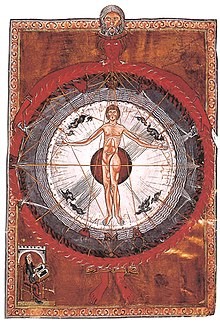
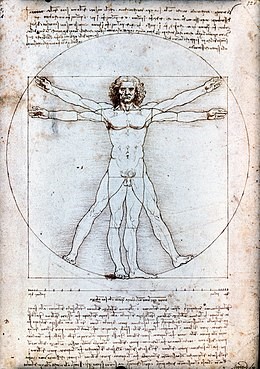
At the beginning of the Renaissance, the physician and first scientist Paracelsus (1493-1541) had this famous saying, which is summarized here: “All things are poison, and nothing is without poison; only the degree to which something is not poison is determined by the measure in which it is taken” (remember that in Greek, Pharmakon means both remedy and poison). At the time, he opposed Galen’s ideas and paved the way for modern medicine.
Ambroise Paré (1510-1590), the famous surgeon and father of surgery, is best known for his famous phrase “Je le pansai, Dieu le guérit” (“I treated him, God healed him”). Proof that in his time, the link between Heaven and Earth was indeed present, and that the door to something greater than oneself is always open.
A Chinese doctor would have replaced “God” with ” Sky “. The ideogram for Sky shows this very well. The sky/Heaven is that which is greater than Man, even when he is great.

In the 19th century, vis medicatrix naturae was interpreted as vitalism and, in this form, became the basis of the philosophical framework of homeopathy, chiropractic, osteopathy and naturopathy. Search the Internet for the words “vis medicatrix naturae” and you’ll find yourself in the land of what we now politely call “alternative” or “complementary” medicine, of which Shiatsu is obviously a part.
Relationship with homeostasis
American physiologist Walter Bradford Cannon first coined the word homeostasis (Claude Bernard had already spoken of it before him, but without using this precise word) from the two Greek words stasis (stability, state, position) and homolos (equal, similar to and homoios, identical), in his book “The Wisdom of the Body” in 1926.
“Higher living beings constitute an open system with numerous relationships with the environment. Changes in the environment trigger reactions in the system or affect it directly, leading to internal disturbances in the system. Such disturbances are normally kept within narrow limits because automatic adjustments within the system come into play, thus avoiding wide oscillations as internal conditions are kept more or less constant (…). The coordinated physiological reactions that maintain most of the body’s dynamic equilibrium are so complex and so particular to living organisms that it has been suggested that a special designation be used for them: that of homeostasis”.
Walter Cannon’s notion of homeostasis is also inspired by the vis medicatrix naturae. In his own words:
“All I have done so far in reviewing the various protective and stabilizing mechanisms of the body is to present a modern interpretation of the vis medicatrix naturae”.
This term is extended to biology to designate the characteristic of any kind of system, open or closed, enabling it to regulate the internal environment in order to preserve a stable condition. Stability is achieved through various regulatory mechanisms and dynamic adjustments.
Homeostasis is one of the major principles of physiology, since if this characteristic fails, it can lead to the malfunctioning of several organs.
A perfect example of homeostasis is given by Itsuo Tsuda, who cites in his writings a Japanese researcher who had discovered the function of the common cold, which was to rebalance the body when it lost its left-right trim. He positioned each of his patients’ feet on a scale, and when the deviation exceeded 10%, he noticed that a cold was triggered! The conclusion was that the common cold could be a homeostasis function and not just a “cold snap”.
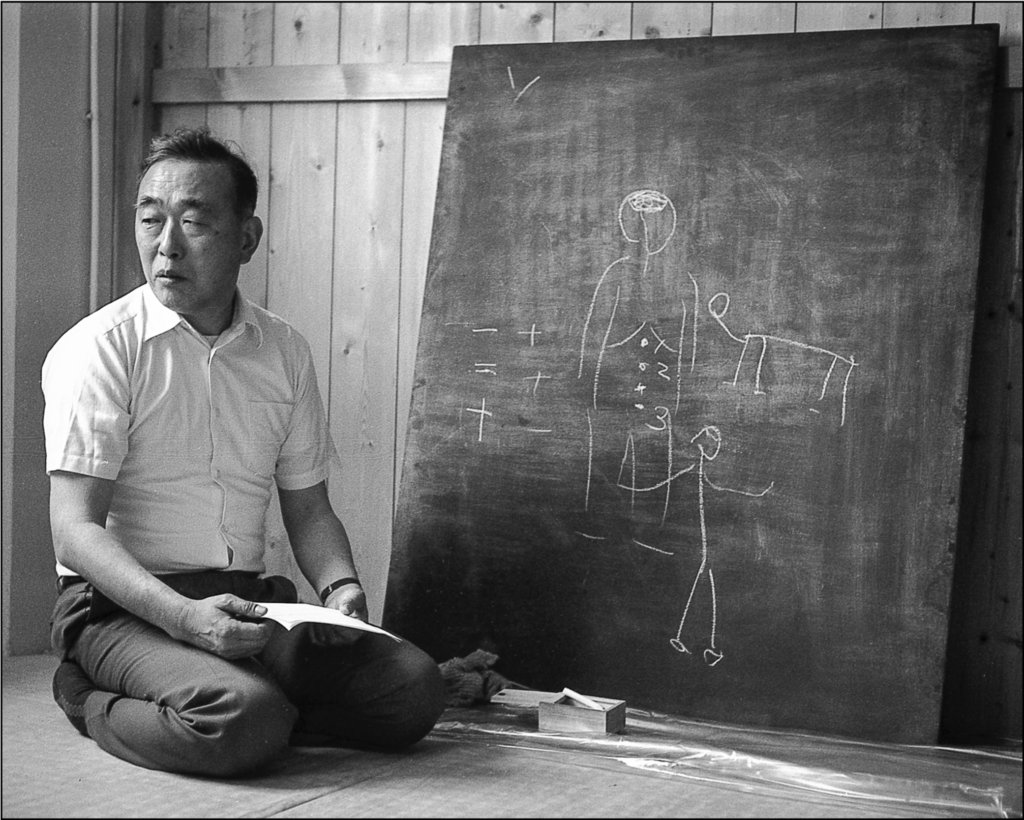
More recently, medicine has identified many medical symptoms such as fever, inflammation, fatigue and morning sickness as evolved adaptations that function as medicatrix naturae by being selected as a means of protecting, healing or restoring the injured, infected or physiologically disturbed body.
Modern pharmaceutical and chemical medicine has moved away from this notion and the body’s ability to heal itself. Classical doctors” no longer believe in this healing power. They believe only in the chemistry of their prescriptions, and sometimes deny the deleterious effects of drugs.
So that’s the framework, and we can now move on to our study of the Meiken effect.
Notes
- The Upanishads are ancient texts that form the basis of the Hindu religion. There are 108 texts considered as the most important. The meaning of the word is “to come and sit respectfully at the foot of the master to listen to his teaching”.
- Walter Bradford Cannon (1871-1945): American physiologist and precursor of the famous X-rays. Among other things, he developed the fight-flight response principle, which gave rise to the double constraint principle and, after Claude Bernard, to the concept of homeostasis, notably in The Wisdom of the Body (1932). This concept of homeostasis, one of the most important in biology and physiology, is one of the keys to the development of the cybernetic movement (source Wiki).
- Itsuo Tsuda (1914-1984): philosopher, aikido master, painter and passionate healer. After travelling the USA, he settled in Paris, where he taught and wrote 9 volumes on his school of breathing (to speak of Breath, Ki), all published by Courrier du livre, (published from 1973 to 2015). In particular, he popularized the body’s involuntary and automatic reactions, katsugen undo.
Author
- The Meiken effect in Shiatsu – part. 3 - 15 May 2023
- The Meiken effect in Shiatsu – part. 2 - 30 January 2023
- The Meiken effect in Shiatsu – part. 1 - 25 November 2022
